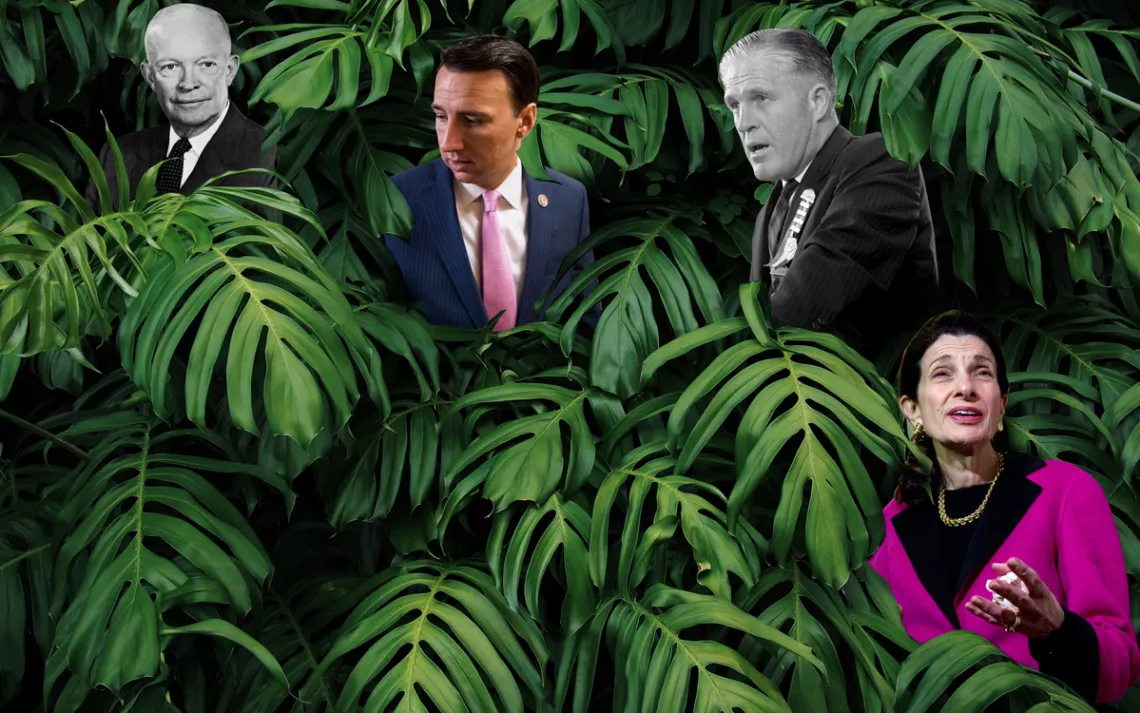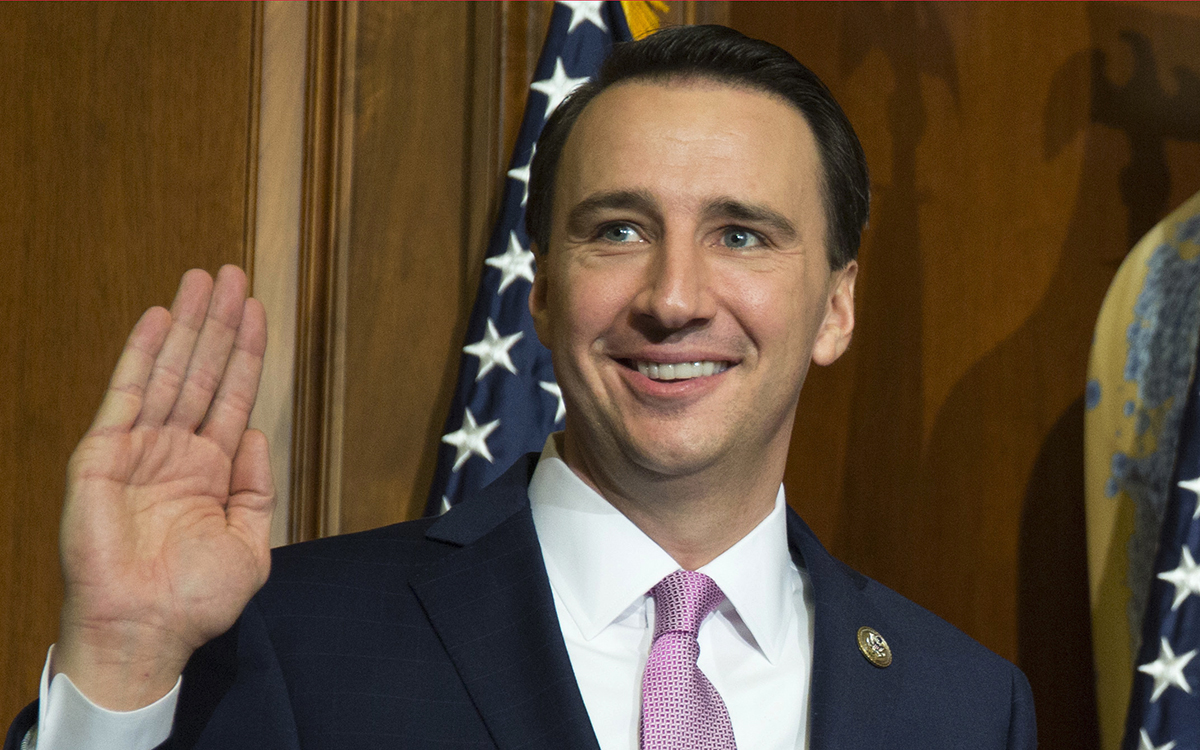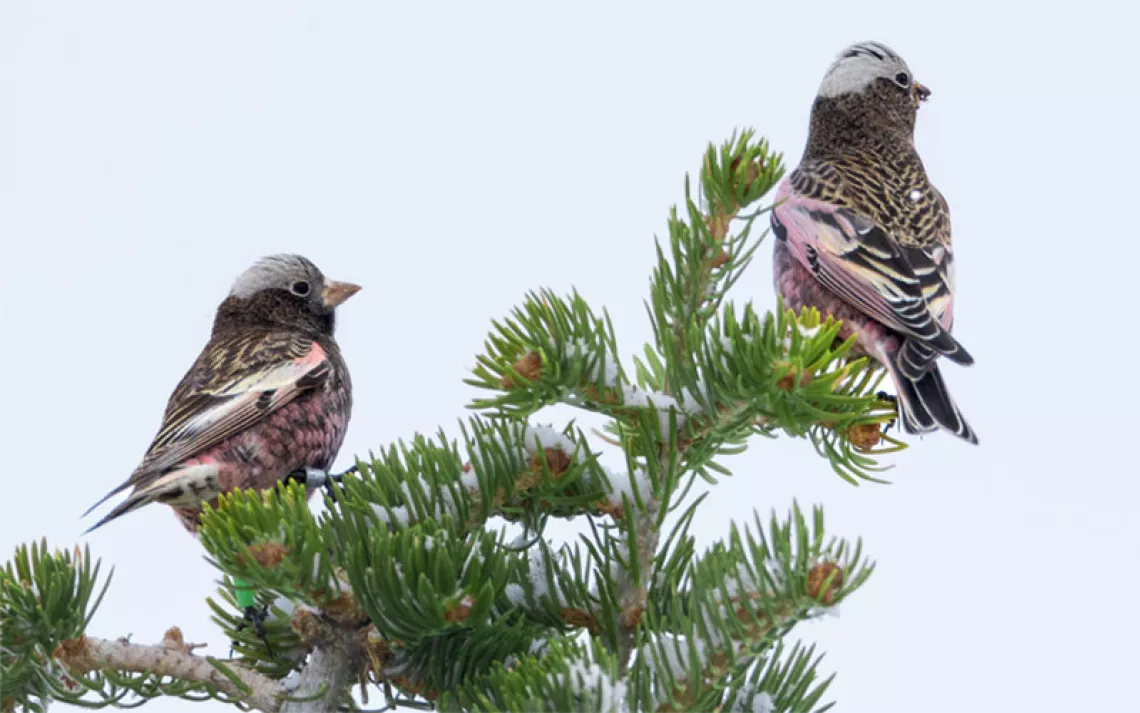Time to List the Republican Moderate as an Endangered Species
This political animal has been extirpated from much of its former range and needs protection

Photo by Chansom Phantip/iStock
On this day 45 years ago, President Nixon signed into law the Endangered Species Act, one of the most radical and ambitious efforts to protect wildlife and their habitats. The law has been a proven success, and has helped to restore populations of the bald eagle, southern sea otter, gray wolf, and gray whale.
It’s time now to include a political animal to the list of species protected by the ESA—the Republican Moderate, whose numbers are in free fall and which has been extirpated from large areas of its former range. Here, then, is a petition to the US Fish and Wildlife Service to list the Republican Moderate as either “threatened” or “endangered.” Array]
--------------------------------------------------------------------------------------------------------
PETITION TO LIST THE Republican Moderate
(Americanus republican moderatus) UNDER THE ENDANGERED SPECIES ACT

Photo by AP Photo/Zach Gibson
Ryan Costello, a specimen of the disappearing Republican Moderate (Americanus republican moderatus)
Petition submitted to the US Secretary of the Interior,
Acting through the Fish and Wildlife Service
Petitioner:
Sierra Club
2101 Webster Street, Suite 1300
Oakland, CA 94612
415-977-5500
December 28, 2018
INTRODUCTION
Sierra Club requests that the US Secretary of the Interior, acting through the Fish and Wildlife Service (FWS), an agency within the Department of the Interior, list the Republican Moderate (Americanus republican moderatus) as “threatened” or “endangered” under the Endangered Species Act (ESA) (16 U.S.C. §§ 1531-1544). Petitioner also requests that the FWS designate critical habitat for the species.
The Republican Moderate is a distinct subspecies of the more common American Republican (Americanus republican), a political animal that has been found within the boundaries of the United States since 1854. The subspecies is distinguished from the primary species by its tolerant views on social issues, fiscal prudence, commitment to democratic norms, willingness to engage in political compromise, and general civility. While Americanus republican remains widespread, the distinct subspecies of Republican Moderate has been in decline for at least 40 years; has experienced acute population losses in the last 20 years; and has been extirpated from large areas of its former range.
The Republican Moderate is threatened by at least three factors identified in the ESA as listing criteria. It is experiencing habitat loss due to ideological polarization and the extreme gerrymandering of US congressional districts. It has no legal protection at either the state or federal level—if anything, current state and federal policies appear to be contributing to its accelerating diminishment. The subspecies is also suffering from intense predation. This predation is coming both from another Republican subspecies, the Republican Extremist (Americanus republican summa), as well as the subspecies’ most widespread competitor, the American Democrat (Americanus popularem).
PETITIONER
The Sierra Club is America’s largest and most influential grassroots environmental organization, with more than 3.5 million members and supporters. In addition to helping people from all backgrounds explore nature and our outdoor heritage, the Sierra Club works to promote clean energy, safeguard the health of our communities, protect wildlife, and preserve our remaining wild places through grassroots activism, public education, lobbying, and legal action. The Sierra Club also includes a Democracy Program that advocates for civic engagement and a level political playing field. While the Sierra Club has often been an ESA petitioner, this is the first time the organization has sought to protect a political animal.
BACKGROUND
Species Description
Once referred to as a Rockefeller Republican, the Republican Moderate was among the dominant political animals in the United States from roughly the 1930s to the 1970s, when political scientists began to notice its decline. At their zenith, members of this subspecies exhibited some of the same basic characteristics and behaviors. They were usually (though not exclusively) white Anglo-Saxon Protestants, often Episcopalian, though sometimes Presbyterian or Lutheran. Typically found congregating at watering holes such as country clubs and company picnics, they were often small-town gentry, petit bourgeoisie, or from the business class elite. A noted behavioral activity was golfing, which was the favorite sport of the subspecies’ best-known member, Dwight D. Eisenhower. The Republican Moderate was fond of The Saturday Evening Post and Reader’s Digest, and had an instinct for the prompt and gracious Thank You card.
The subspecies’ most distinctive features, however, were—and remain—not physical or behavioral, but rather ideological. The Republican Moderate has long been distinguished by its cultural liberalism. In the 1950s and '60s, many members of the subspecies were allies of the African American civil rights movement. In the 1990s and early 2000s, Republican Moderates exhibited support for women’s reproductive rights and sometimes were witnessed defending LGBTQ rights.
Republican moderatus can be identified by a commitment to the basic norms of American democracy and the rule of law. Unlike republican summa, they rarely engage in the nest-robbing-like behavior of voter suppression. The Republican Moderate makes a marked show of its loyalty to civic values, which sometimes displays as misty-eyed paeans to a mythic America that never really existed. In the younger males of the subspecies, this characteristic behavior exhibits as unbearable smugness.
In sharp contrast to the Republican Extremist, the Republican Moderate demonstrates a willingness to accept empirical evidence. The underbelly of the Republican Moderate is distinguished by a softness for environmental protection; a prominent 20th century member of the subspecies, George H.W. Bush (recently deceased due to natural causes), even carved out territory as an advocate for taking action on global climate change.
It should be noted that Americanus republican moderatus is known for an extreme polymorphism that can make it difficult for political scientists to identify members of the subspecies with total confidence. Some members of the subspecies even engage in a kind of ideological photoperiodism in which they are able to take on and remove key subspecies characteristics when pressed by competitors from either flank (see: McCain, John). The well-known ecological problem of the shifting baseline also complicates identification. In temperament, for example, Paul Ryan might be considered an Americanus republican moderatus, even though his behavior of protecting rich people’s privileges while driving up the national debt is contrary to the subspecies’ signature patterns of noblesse oblige and fiscal prudence.
Geographic Distribution: Historic and Current
Republican moderatus once flourished throughout much of the United States, but today its range has been greatly restricted, threatening the subspecies’ ability to maintain genetic diversity.
New England and the mid-Atlantic states were once a Republican Moderate stronghold, and members of the subspecies thrived in the leafy precincts where their young excelled at lacrosse, the debate team, and Model UN. In recent times, Republican Moderate US senators such as Lincoln Chaffee, Jim Jeffords, and Olympia Snow were able to survive in the Northeast. But their numbers have plummeted. The forthcoming Congress will not include a single Americanus republican from New England; a small remnant population survives in parts of New York, New Jersey, and Maryland.
A similar population collapse has occurred in California. The last known president to display any meaningful republican moderatus characteristics, Richard Nixon, was from California, and the sprawling suburbs of the state were once prime territory for the subspecies. With their mix of pro-business boosterism and cultural laissez-faire, Orange and San Diego Counties provided the ideal habitat for republican moderatus. No longer. Orange County is now dominated by Americanus popularem, and the state’s incoming congressional delegation will include just a half dozen Republicans in total.
The Mountain West is also increasingly inhospitable to the Republican Moderate. The subspecies has lost considerable ground in Arizona—whose cultural conditions closely resemble that of Orange County, California—and in Colorado too. A remnant republican moderatus in Salt Lake City was recently displaced by a competing Democrat.
IDENTIFIED THREATS TO THE PETITIONED SPECIES: CRITERIA FOR LISTING
The Republican Moderate meets at least four of the criteria for listing identified in ESA § 4 (16 U.S.C. §1533(a)(1)):
Present or threatened destruction, modification, or curtailment of habitat or range
Disease or predation
Inadequacy of existing regulatory mechanisms
Natural or manmade factors
The Present or Threatened Destruction, Modification, or Curtailment of Habitat or Range
As detailed above, the range of the Republican Moderate has shrunk dramatically in the last several decades, to the point where the subspecies has been extirpated from significant portions of former habitat. Several factors contribute to this habitat destruction.
Some natural forces are at work. Political scientists and demographers have demonstrated that, beginning roughly in the 1980s, Americans began to geographically self-sort according to political beliefs, which created more like-minded communities. According to Brookings Institute researcher Elaine Kamarck, “red states have gotten redder, blue states bluer, and the same holds for counties.” This ideological homogenization has come at the expense of the Republican Moderate, which is maladapted to partisan environments.
Political gerrymandering exacerbates this phenomenon. State legislatures sometimes draw outlandishly shaped US congressional districts designed to keep areas “safe” for the two primary political party species. This habitat modification is contributing to Republican Moderate decline, as some political scientists have identified a correlation between gerrymandering and political polarization. Such polarization is ill-suited to republican moderatus, which has been shown to thrive in the vital center.
Disease or Predation
The Republican Moderate is experiencing both intra-species predation from the Republican Extremist (Americanus republican summa) as well as inter-species predation from the Democrat (Americanus popularem).
The aforementioned problem of political gerrymandering, combined with closed primary elections, is likely increasing intra-species competition to the detriment of the Republican Moderate. During the intra-species selections that occur every other year in the spring and summer seasons, an emboldened republican summa has wiped out many Republican Moderates. Those that do survive the spring intra-species contests are then often too wounded or weakened to fend off the competition that comes from Americanus popularem during bi-annual autumn territorial struggles.
In the face of such combined pressure, many Republican Moderates have simply fled from the political landscape.
Inadequacy of Existing Regulatory Mechanisms
There are currently no federal or state regulations to protect the diminishing Republican Moderate. On the contrary, existing state and federal policies are very likely contributing to the subspecies’ decline.
As detailed above, state elected officials’ enthusiasm for political gerrymandering is shrinking the Republican Moderate’s range while intensifying intra-species predation. At the national level, the 1987 repeal of the Fairness Doctrine has also contributed to the Republican Moderate’s decline.
For decades, the Fairness Doctrine required national broadcasters to allow airtime for all political points of view. Political scientists and media experts have identified a correlation between the demise of the Fairness Doctrine and the ascendance of partisan media on both the right and the left—a process that accelerated with the creation of internet media. The increasing polarization and fragmentation of the national media represents yet another threat to the Republican Moderate, which no longer has a cultural space in which to reach maturity.
Natural or Manmade Factors
As with many other species that are threatened by habitat loss, anthropogenic climate change is accelerating the demise of the Republican Moderate. Most often, climate-change-associated pressure is a function of increasing competition from members of Americanus popularem that seek to flaunt their bright-green environmental markings to attract voters.
This is a biological-political irony, since the republican moderatus subspecies tries to differentiate itself from the larger Republican species by accepting the basic science of climate change. This may be an example of polymorphism as an evolutionary liability: Since it can be difficult for voters to distinguish the Republican Moderate’s subtle and shifting green markings, the subspecies is often confused for the main species and finds itself consumed in the autumn territorial contests.
CONCLUSION AND REQUESTED DESIGNATION
Nature abhors a monoculture, and landscapes that are dominated by just a few species are often considered to be biologically impoverished. The same is true for political ecology. When a republic is dominated by a small number of political species, it runs the risk of becoming ossified; a political landscape requires diversity of opinion just as a natural area requires a diversity of species.
To recover, the Republican Moderate will first require the designation of critical habitat in which the subspecies can flourish. Among other things, this will mean reestablishing the Fairness Doctrine in broadcast media and creating a Fairness Doctrine for online media; abolishing gerrymandering through the creation of independent citizen commissions to design congressional districts; and, perhaps most importantly, increasing the size of the House of Representatives for the first time in more than a century.
In Federalist #10, James Madison warned against the dangers of factionalism and political monopoly, even as he conceded that “the latent causes of faction are thus sown in the nature of man.” Madison concluded that the best way to control the dangers of factionalism and the risk of mob rule was by expanding the breadth of political representation:
“Extend the sphere, and you take in a greater variety of parties and interests; you make it less probable that a majority of the whole will have a common motive to invade the rights of other citizens; or if such a common motive exists, it will be more difficult for all who feel it to discover their own strength, and to act in unison with each other.”
The actions listed above would “extend the sphere” of American democracy, and in doing so would expand the breadth of political representation in the United States today. Creating the conditions to save one species will increase the vibrancy and resilience of political animals of all stripes.
 The Magazine of The Sierra Club
The Magazine of The Sierra Club






